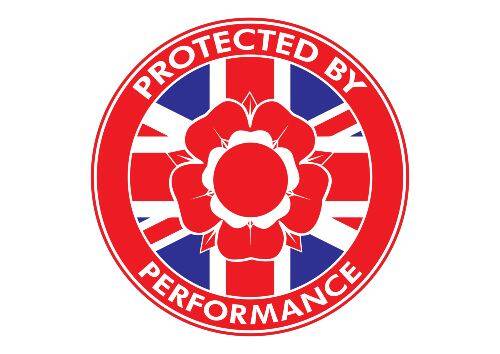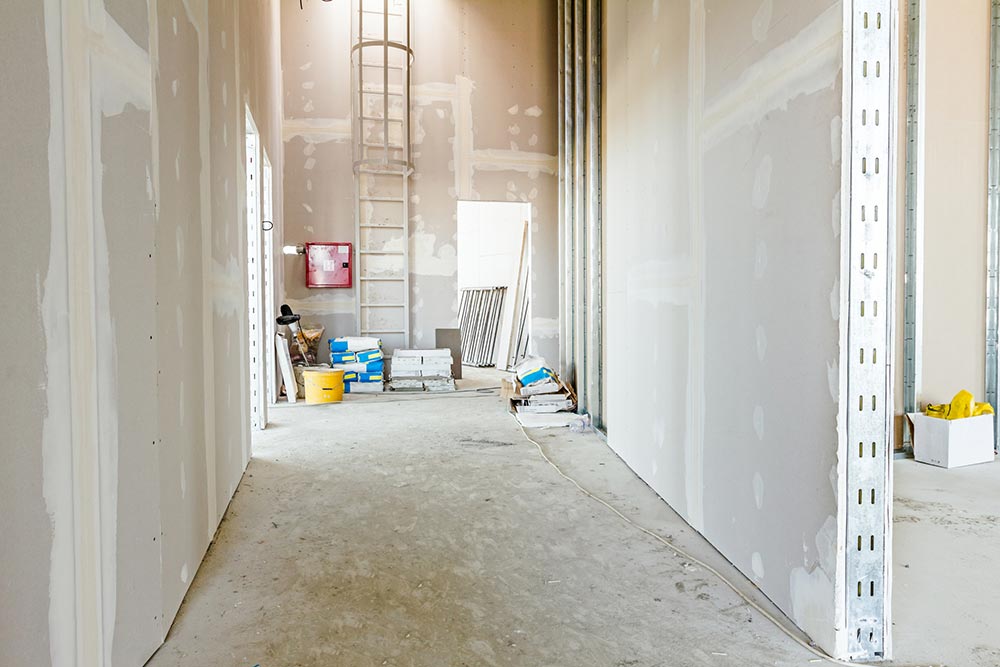All Blogs
14 Top Tips For Painting Your Home Like a Professional
Table of Contents – An Overview

Use tools to check different colours against the space.
When most people come to paint a room, they flick through a fan deck looking for the perfect shade, maybe holding up samples to the wall to try and get an idea of how it’ll look.
However, this will rarely give you a sufficient view of how the colour will work within the space.
Since the worst time to find out that your chosen colour doesn’t suit the room is when you’ve just finished painting, it’s a good idea to use all the tools you can to make sure this doesn’t happen.
First, unbeknown to many DIY painters, you can often request extra-large swatches of your shortlisted paints from your local hardware store.
If you can’t get hold of any, you can make one yourself using a single bucket of your chosen colour to paint a large piece of card, which you can hold up against the wall. After all, wasting money on just one bucket of paint is better than wasting it on ten, not to mention the hours you’ll spend on the paint job itself.
Otherwise, there are apps available to simulate how your chosen colour will look on your walls, so you can check several colours’ compatibility with the space.
Use a paint calculator (and then buy a can or two more).
If you’ve rarely – if ever – painted walls before, then you probably won’t have a clue how much paint you’ll need for the job.
Luckily, there are numerous paint calculators online (such as this one) to help you figure out the right amount to buy – which takes into account your window and door measurements and how many coats you’ll need – to prevent you from buying 5 less (or more) cans than you need.
Having said this, it’s always a good idea to buy one or two more cans than estimated, as it’s not worth running out of paint mid paint job.
Wash your walls.
You’d be surprised by how much dirt and dust can stick to the walls of your home – not to mention all the marks that have appeared over the years, which can contribute to an uneven paint job if the colour you choose is quite light.
Plus, if you’re planning on doing any repairs on your wall with filler, washing the area first is standard practice, so you may as well wash the whole wall to achieve the smoothest paint job you can, to ensure that no dust or dirt ends up embedded in the paint.
Fill cracks and holes before you paint.
If you’re going to paint a room in your home, you might as well make it as perfect as possible.
With this in mind, before you begin painting is the perfect time to repair any dents, holes or cracks in your wall, using spackling paste (filler) and pressing it into the grooves with a putty knife.
Finally, make sure to sandpaper the area to make it completely even.
To create a completely smooth, perfect finish throughout the whole paint job, professionals often sandpaper the whole of the wall before painting. If you want your paint job to look as professional as possible, you could do this too.

Wash your painting tools before use.
To achieve a perfect finish on your paint job, it’s always a good idea to wash your tools before you load them up with paint.
Even if the tools have come straight from the hardware store – dirt, dust, or simply fluff can attach to your brush or paint rollers, which will inevitably come off when you come to paint the walls.
Simply wash your tools with soapy water to make sure you don’t end up with embedded fluff and dirt ruining your otherwise perfect paint job.
Primer before paint.
Primer solves two main problems.
One: the surface of a wall is often porous which draws in the paint, resulting in an uneven paint job when the paint dries. Filler has the same effect, absorbing paint where you’ve made repairs.
Two: when a surface has a sleek or satin finish, it can be difficult for the paint to properly adhere to the wall.
Primer solves both of these problems, providing an easy surface for your paint to lock onto.
This is especially important if you’re planning to paint a darker wall lighter, as it helps the paint to more easily cover the darker colour underneath – you should also make sure to use two coats of paint over the top to ensure the darker colour doesn’t show through.
Tint your primer.
Tinting your primer with a little of the colour you’re planning to use is a good way to help ensure a full and even colour across the room.
This is even more beneficial if you’re trying to paint a lighter colour over a darker one, as what will effectively act as an extra coat of paint will help to cover the darker colour underneath.
Protect your room.
Typically, the purpose of a paint job is to improve the appearance of the room, and splatters of paint on your furniture, floor and trim is going to be counterproductive to your goal.
If at all possible, remove furniture – or at least the easily moveable pieces – from the room. If your sofa, bed, or anything else is too much of a hassle to get out then use a tarp to protect it.
It’s also a good idea to use canvas to protect the floors and furniture compared to a plastic alternative. Grab yourself a dust sheet here
Since plastic isn’t absorbent, the paint can easily transfer from the plastic to your clothes or anything else, while also presenting a slip hazard.
Lastly, always use tape to protect the trim and cover any sockets with masking tape.
Mix all the paint together.
Across different paint cans of what is – theoretically – the same colour paint, there can be a slight variation in the hue.
So, to avoid accidentally painting your wall two very slightly different colours, tip all of the paint you intend to use into a large bucket and mix it so they blend to create one colour before you begin painting.

Apply the paint in W or M shaped strokes.
Most professional painters roll paint onto the walls in a W or M shape, then fill the inside of the W, then the outside, to create a perfectly even paint job.
It’s also a good idea to use a paintbrush extender so you can make the shape extend to the top of the wall, to avoid leaving lap marks and ensure an immaculate finish.
Always overlap strokes to avoid lap marks.
To avoid being left with walls replete with lap marks and to achieve a perfectly even paint job across the room, always maintain a ‘wet edge’.
In practice, this means that when making your W/M marks on the wall you continue to paint in this pattern following on from the edge you last painted, while it’s still wet.
This prevents lap marks from showing up on the wall, which is caused by painting on top of already partially dried paint.
Paint one wall at a time.
For the same reason, to avoid lap marks when painting your home, it’s best to paint one wall at a time, as this significantly reduces your chance of painting over already dry paint.
If you’re painting walls in different colours, go from light to dark.
For the sake of ease, if you’re painting your walls two different colours – for example, if you choose to add an accent wall – then start painting the lighter walls first.
For the most part, this is because, when painting the light walls first, you don’t need to worry about splattering light paint onto the dark wall, since the dark paint will just cover it up.
This way, you only need to be cautious about splatter when painting the one darker wall.
Once you’re done, prepare for your future repainting needs.
You may go about painting your home again in the future, whether to give the whole space a refresh or simply to touch up areas of imperfection.
For this reason, it’s crucial to note down what colours and tools you’ve used, so that you can easily locate them again should you need them for touch-ups.
Otherwise, if you have any paint left, you should store it in a cool, dry location so you can save it for future use, along with the tools you used to complete the job.
Conclusion
We hope that this guide has helped. Palatine Paints have been manufacturing paints for over 75 years and have a dedicated technical and sales team to answer any questions you may have, about any number of our product ranges.
If you have any questions on the products we’ve listed here, our dedicated sales and/or technical team are here to help.
Email: [email protected]
Call Us: 01942 884 122
Abrasives
Paint Roller Sleeves



